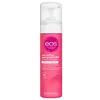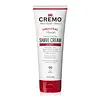What's inside
What's inside
 Key Ingredients
Key Ingredients

 Benefits
Benefits

 Concerns
Concerns

 Ingredients Side-by-side
Ingredients Side-by-side

Water
Skin ConditioningCetyl Alcohol
EmollientPropylene Glycol
HumectantGlycerin
HumectantCocoglycerides
EmollientStearyl Alcohol
EmollientLaureth-23
CleansingCI 77891
Cosmetic ColorantColloidal Oatmeal
AbsorbentPetrolatum
EmollientGlyceryl Stearate Se
EmulsifyingButyrospermum Parkii Oil
EmollientButyrospermum Parkii Butter
Skin ConditioningHelianthus Annuus Seed Oil
EmollientAloe Barbadensis Leaf Juice
Skin ConditioningPunica Granatum Extract
AstringentRubus Idaeus Leaf Extract
Skin ConditioningDimethicone
EmollientAscorbyl Palmitate
AntioxidantCaprylyl Glycol
EmollientParfum
MaskingPhenoxyethanol
PreservativeMagnesium Aluminum Silicate
AbsorbentPotassium Sorbate
PreservativeCarbomer
Emulsion StabilisingHexylene Glycol
EmulsifyingDisodium EDTA
Tocopheryl Acetate
AntioxidantSodium Hydroxide
BufferingCitric Acid
BufferingSodium Benzoate
MaskingHexyl Cinnamal
PerfumingLinalool
PerfumingButylphenyl Methylpropional
PerfumingLimonene
PerfumingCitronellol
PerfumingHydroxycitronellal
PerfumingWater, Cetyl Alcohol, Propylene Glycol, Glycerin, Cocoglycerides, Stearyl Alcohol, Laureth-23, CI 77891, Colloidal Oatmeal, Petrolatum, Glyceryl Stearate Se, Butyrospermum Parkii Oil, Butyrospermum Parkii Butter, Helianthus Annuus Seed Oil, Aloe Barbadensis Leaf Juice, Punica Granatum Extract, Rubus Idaeus Leaf Extract, Dimethicone, Ascorbyl Palmitate, Caprylyl Glycol, Parfum, Phenoxyethanol, Magnesium Aluminum Silicate, Potassium Sorbate, Carbomer, Hexylene Glycol, Disodium EDTA, Tocopheryl Acetate, Sodium Hydroxide, Citric Acid, Sodium Benzoate, Hexyl Cinnamal, Linalool, Butylphenyl Methylpropional, Limonene, Citronellol, Hydroxycitronellal
Water
Skin ConditioningSodium Cocoyl Isethionate
CleansingStearic Acid
CleansingCetearyl Alcohol
EmollientGlycol Distearate
EmollientParfum
MaskingMacadamia Ternifolia Seed Oil
EmollientPolyether-1
Hydroxypropyl Guar Hydroxypropyltrimonium Chloride
Allantoin
Skin ConditioningAloe Barbadensis Leaf Juice
Skin ConditioningCalendula Officinalis Flower Extract
MaskingXylitol
HumectantCitrus Limon Fruit Extract
MaskingCarica Papaya Fruit Extract
Skin ConditioningOlea Europaea Leaf Extract
PerfumingBHT
AntioxidantPerfluorodecalin
Skin ConditioningPhenoxyethanol
PreservativeEthylhexylglycerin
Skin ConditioningTitanium Dioxide
Cosmetic ColorantCitric Acid
BufferingWater, Sodium Cocoyl Isethionate, Stearic Acid, Cetearyl Alcohol, Glycol Distearate, Parfum, Macadamia Ternifolia Seed Oil, Polyether-1, Hydroxypropyl Guar Hydroxypropyltrimonium Chloride, Allantoin, Aloe Barbadensis Leaf Juice, Calendula Officinalis Flower Extract, Xylitol, Citrus Limon Fruit Extract, Carica Papaya Fruit Extract, Olea Europaea Leaf Extract, BHT, Perfluorodecalin, Phenoxyethanol, Ethylhexylglycerin, Titanium Dioxide, Citric Acid
 Reviews
Reviews

Ingredients Explained
These ingredients are found in both products.
Ingredients higher up in an ingredient list are typically present in a larger amount.
Aloe Barbadensis Leaf Juice comes from leaves of the aloe plant. Aloe Barbadensis Leaf Juice is best known for helping to soothe sunburns. It is also anti-inflammatory, moisturizing, antiseptic, and can help heal wounds.
Aloe is packed with good stuff including Vitamins A, C, and E. These vitamins are antioxidants, which help fight free-radicals and the damage they may cause. Free-radicals are molecules that may damage your skin cells, such as pollution.
Aloe Barbadensis Leaf Juice also contains sugars. These sugars come in the form of monosaccharides and polysaccharides, folic acid, and choline. These sugars are able to help bind moisture to skin.
It also contains minerals such as calcium, 12 anthraquinones, fatty acids, amino acids, and Vitamin B12.
Learn more about Aloe Barbadensis Leaf JuiceCitric Acid is an alpha hydroxy acid (AHA) naturally found in citrus fruits like oranges, lemons, and limes.
Like other AHAs, citric acid can exfoliate skin by breaking down the bonds that hold dead skin cells together. This helps reveal smoother and brighter skin underneath.
However, this exfoliating effect only happens at high concentrations (20%) which can be hard to find in cosmetic products.
Due to this, citric acid is usually included in small amounts as a pH adjuster. This helps keep products slightly more acidic and compatible with skin's natural pH.
In skincare formulas, citric acid can:
While it can provide some skin benefits, research shows lactic acid and glycolic acid are generally more effective and less irritating exfoliants.
Most citric acid used in skincare today is made by fermenting sugars (usually from molasses). This synthetic version is identical to the natural citrus form but easier to stabilize and use in formulations.
Read more about some other popular AHA's here:
Learn more about Citric AcidParfum is a catch-all term for an ingredient or more that is used to give a scent to products.
Also called "fragrance", this ingredient can be a blend of hundreds of chemicals or plant oils. This means every product with "fragrance" or "parfum" in the ingredients list is a different mixture.
For instance, Habanolide is a proprietary trade name for a specific aroma chemical. When used as a fragrance ingredient in cosmetics, most aroma chemicals fall under the broad labeling category of “FRAGRANCE” or “PARFUM” according to EU and US regulations.
The term 'parfum' or 'fragrance' is not regulated in many countries. In many cases, it is up to the brand to define this term.
For instance, many brands choose to label themselves as "fragrance-free" because they are not using synthetic fragrances. However, their products may still contain ingredients such as essential oils that are considered a fragrance by INCI standards.
One example is Calendula flower extract. Calendula is an essential oil that still imparts a scent or 'fragrance'.
Depending on the blend, the ingredients in the mixture can cause allergies and sensitivities on the skin. Some ingredients that are known EU allergens include linalool and citronellol.
Parfum can also be used to mask or cover an unpleasant scent.
The bottom line is: not all fragrances/parfum/ingredients are created equally. If you are worried about fragrances, we recommend taking a closer look at an ingredient. And of course, we always recommend speaking with a professional.
Learn more about ParfumPhenoxyethanol is a preservative that has germicide, antimicrobial, and aromatic properties. Studies show that phenoxyethanol can prevent microbial growth. By itself, it has a scent that is similar to that of a rose.
It's often used in formulations along with Caprylyl Glycol to preserve the shelf life of products.
Water. It's the most common cosmetic ingredient of all. You'll usually see it at the top of ingredient lists, meaning that it makes up the largest part of the product.
So why is it so popular? Water most often acts as a solvent - this means that it helps dissolve other ingredients into the formulation.
You'll also recognize water as that liquid we all need to stay alive. If you see this, drink a glass of water. Stay hydrated!
Learn more about Water